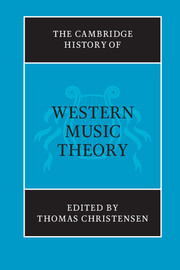Book contents
29 - Thematic and motivic analysis
from A - Models of music analysis
Published online by Cambridge University Press: 28 March 2008
Summary
Western music, with its origins in liturgical chant, can be said to be inherently melodic: the word “theme” was in use in the seventeenth century, and “motif” (later, “motive’) became a common term in art, literature, and music criticism two centuries ago. In the nineteenth century the common English translation of the German word Motiv was “figure,” and the definition of this in 1906 (Parry, at a time when recognizable music theory might be said to have become clearly underway) was comprehensive and prescient:
It is in fact the shortest complete idea in music; and in subdividing works into their constituent portions, as separate movements, sections, periods, phrases, the units are the figures, and any subdivision below them will leave only expressionless single notes, as unmeaning as the separate letters of a word.
This definition is almost as all-embracing as was to be Bent’s definition some seventy years later of “analysis” itself (see p. 913 below), and this indicates that “motive” has been a critical element of the whole modern music-analytical enterprise. The definition also captures, and anticipates, a central impetus in music theorizing as a language analogy. The subject of this chapter has been, then, overtly or implicitly universal in Western music-theoretical writings. Its treatment here will be constrained by the dual aims of concision and plenitude. The conceptual and compositional background will be restricted sharply to recent centuries, and the invocation of “theme” and “motive” will be examined in just three readily identifiable areas: developing variation, set theory, and the one which needs least detailed exposure but perhaps greater critique, semiotics.
- Type
- Chapter
- Information
- The Cambridge History of Western Music Theory , pp. 907 - 926Publisher: Cambridge University PressPrint publication year: 2002
References
- 8
- Cited by

